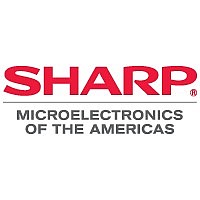LH28F800BVE-BV85 Sharp Electronics, LH28F800BVE-BV85 Datasheet - Page 23

LH28F800BVE-BV85
Manufacturer Part Number
LH28F800BVE-BV85
Description
Manufacturer
Sharp Electronics
Datasheet
1.LH28F800BVE-BV85.pdf
(49 pages)
Specifications of LH28F800BVE-BV85
Cell Type
NOR
Density
8Mb
Access Time (max)
85ns
Interface Type
Parallel
Boot Type
Bottom
Address Bus
20/19Bit
Operating Supply Voltage (typ)
5V
Operating Temp Range
0C to 70C
Package Type
TSOP
Sync/async
Asynchronous
Operating Temperature Classification
Commercial
Operating Supply Voltage (min)
4.5V
Operating Supply Voltage (max)
5.5V
Word Size
8/16Bit
Number Of Words
1M/512K
Supply Current
65mA
Mounting
Surface Mount
Pin Count
48
Lead Free Status / Rohs Status
Not Compliant
sharp
5 DESIGN CONSIDERATIONS
5.1 Three-Line Output Control
The device will often be used in large memory arrays.
SHARP provides three control inputs to accommodate
multiple memory connections. Three-line control provides
for:
To use these control inputs efficiently, an address decoder
should enable CE# while OE# should be connected to all
memory devices and the system’s READ# control line.
This assures that only selected memory devices have
active outputs while deselected memory devices are in
standby mode. RP# should be connected to the system
POWERGOOD signal to prevent unintended writes during
system power transitions. POWERGOOD should also
toggle during system reset.
5.2 RY/BY#, Block Erase and Word/Byte
RY/BY# is an open drain output that should be connected
to V
of detecting block erase and word/byte write completion.
It transitions low after block erase or word/byte write
commands and returns to High Z when the WSM has
finished executing the internal algorithm.
RY/BY# can be connected to an interrupt input of the
system CPU or controller. It is active at all times. RY/BY#
is also High Z when the device is in block erase suspend
(with word/byte write inactive), word/byte write suspend
or deep power-down modes.
a. Lowest possible memory power dissipation.
b. Complete assurance that data bus contention will not
occur.
CC
Write Polling
by a pull up resistor to provide a hardware method
LHF80V35
5.3 Power Supply Decoupling
Flash memory power switching characteristics require
careful device decoupling. System designers are interested
in three supply current issues; standby current levels,
active current levels and transient peaks produced by
falling and rising edges of CE# and OE#. Transient current
magnitudes depend on the device outputs’ capacitive and
inductive loading. Two-line control and proper decoupling
capacitor selection will suppress transient voltage peaks.
Each device should have a 0.1µF ceramic capacitor
connected between its V
and GND. These high-frequency, low inductance
capacitors should be placed as close as possible to package
leads. Additionally, for every eight devices, a 4.7µF
electrolytic capacitor should be placed at the array’s power
supply connection between V
capacitor will overcome voltage slumps caused by PC
board trace inductance.
5.4 V
Updating flash memories that reside in the target system
requires that the printed circuit board designer pay
attention to the V
supplies the memory cell current for word/byte writing
and block erasing. Use similar trace widths and layout
considerations given to the V
supply traces and decoupling will decrease V
spikes and overshoots.
PP
Trace on Printed Circuit Boards
PP
Power supply trace. The V
CC
and GND and between its V
CC
CC
power bus. Adequate V
and GND. The bulk
PP
Rev. 1.2
voltage
PP
pin
20
PP
PP















